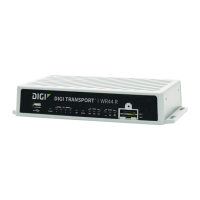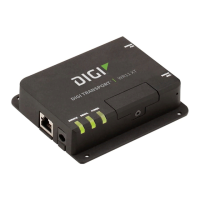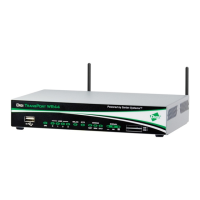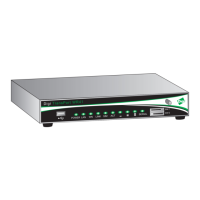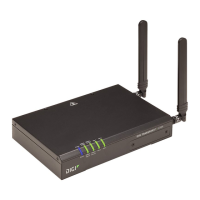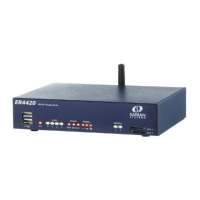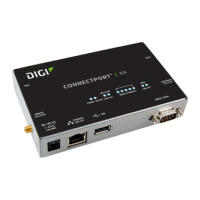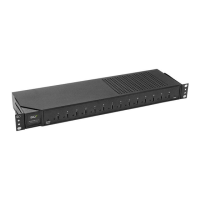Configure Advanced interfaces settings
Digi TransPort User Guide 324
Configure PPP over Ethernet
PPP over Ethernet (PPPoE) is a means of establishing a PPP connection over the top of an
Ethernet connection. The implementation provided is compliant with RFC 2516, “A Method for
Transmitting PPP Over Ethernet”. A typical application would be to allow non-PPPoE enabled
devices to access Internet services where the connection to the Internet is provided by an ADSL
bridge device.
Using the web page(s)
There is no dedicated web page for configuring the router to use PPPoE; rather there are a
number of parameters that appear on other web pages that must be used in conjunction with
each other to establish a PPPoE connection over the appropriate Ethernet interface.
In particular, the following configuration pages and parameters are important.
On the appropriate Configuration > Network > Interfaces > Advanced > PPP n-n pages, you
should configure the following parameters on the Configuration > Network > Interfaces >
Advanced > PPP n-n > PPP n pages:
As a minimum requirement the Username and Password parameters should be initialized.
The This PPP interface will use x,y defines the physical Ethernet interface over which the PPPoE
session will operate. In most cases this is PPPoE 0 (for Ethernet 0). The fact that you have
selected PPPoE 0 as the physical interface for operation with PPP automatically enables PPPoE
mode. If another Ethernet instance is used, Eth 1 for example, this will need to be specified as
PPPoE 1 to ensure the correct MAC address is used, this is in the format 0 or blank for port 0, 1
for port 1, 2 for port 2 etc.
If necessary, continue to the page Configuration > Network > Interfaces > Advanced > PPP n-n
> PPP n > Advanced and set the Enable "Always On" mode of this interface parameter to On
to configure the router so that it will attempt to renegotiate the PPP link should it go down for
any reason.
PPP negotiation
The advanced PPP options on this page should be initialized as required by your ISP.
In addition:
• Desired Local MRU and Desired Remote MRU should be set to “1492”.
• Request Local ACFC and Request Remote ACFC should be set to “No”.
• Request Local PFC and Request Remote PFC should be set to “No”.
• Desired Local ACCM and Desired Remote ACCM should be set to “0xffffffff”.
Using text commands
There are no specific PPPoE commands available to the user via the text command interface. The
appropriate ppp CLI commands should be used to set the required options.
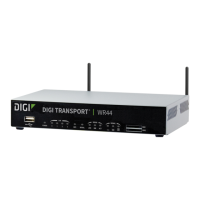
